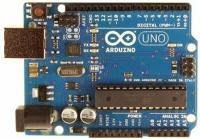Headphones or
"head-phones" in the early days of telephony and radio are a pair of
small loudspeakers that are designed to be held in place
close to a user's ears. They are also known as earspeakers, earphones or, colloquially, cans. The alternate
in-ear versions are known as earbuds or earphones. In the context of telecommunication, a headset is a combination of headphone and microphone. Headphones either have
wires for connection to a signal source such as an audio amplifier, radio, CD player, portable media player,mobile phone, electronic musical instrument, or have
a wireless device, which is used to pick up
signal without using a cable.
Structure of the headphone and its working
The headphones here too follow
the conventional structure. However, the part that bears the boom for
microphone has a slight difference as an extra cable for it is attached into it.
The left section of the headset
houses the microphone and one half of the speaker set. When the speaker section
of the headphone is opened, the
wiring coming from
the headphone jack can be seen soldered to the driver of the speaker
section. The wire coming from the microphone jack doesn’t form any
connections to the internal circuitry. The copper wire in a thin plastic
covering in the image above is that of the microphone. Instead, the wiring from
the jack of the microphone simply extends to the microphone
Right part of the Headset merely houses the headphone circuitry and is
not having any extra wire for microphone. A single wire which connects the left
and right headphones is placed in the groove of the plastic band.





